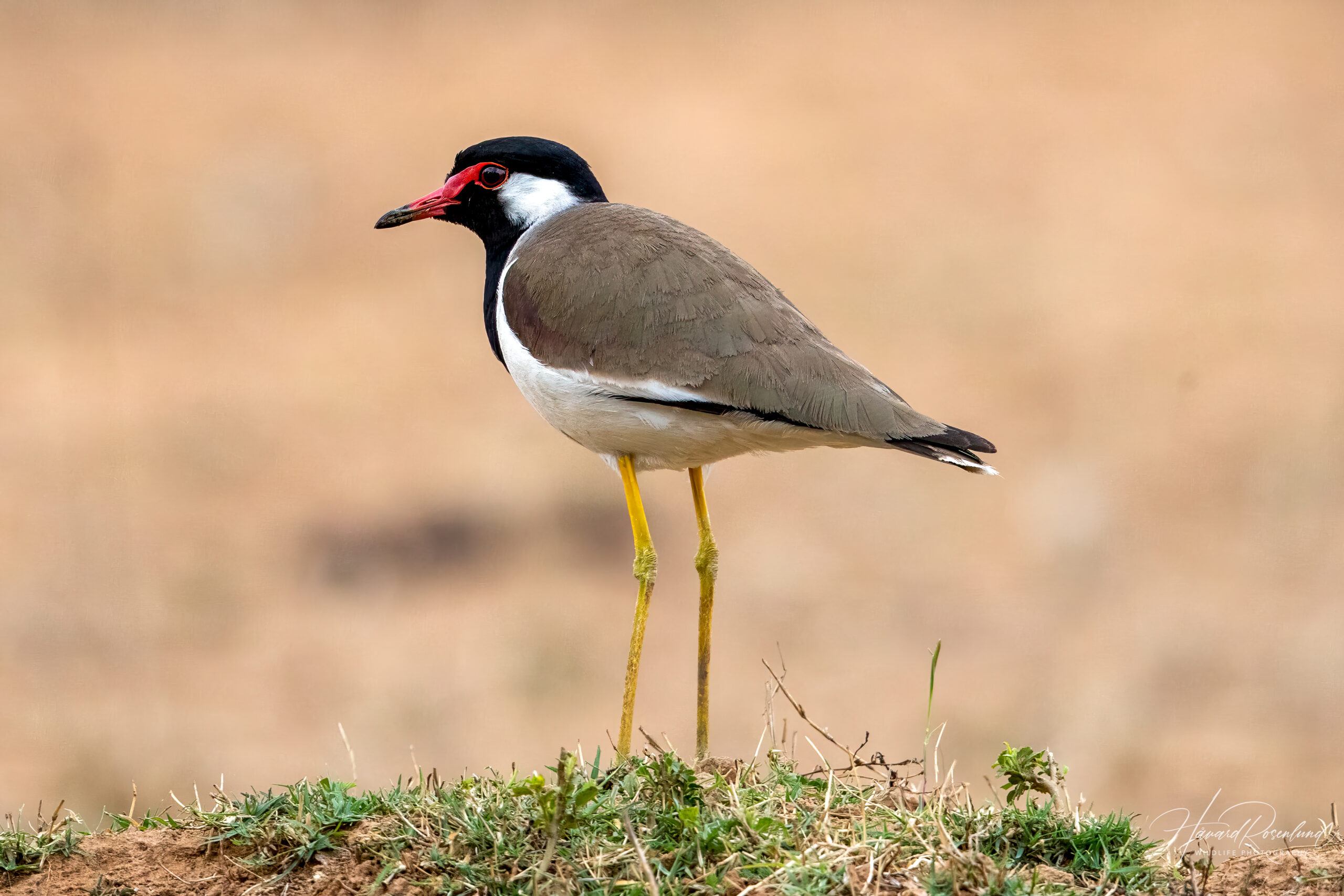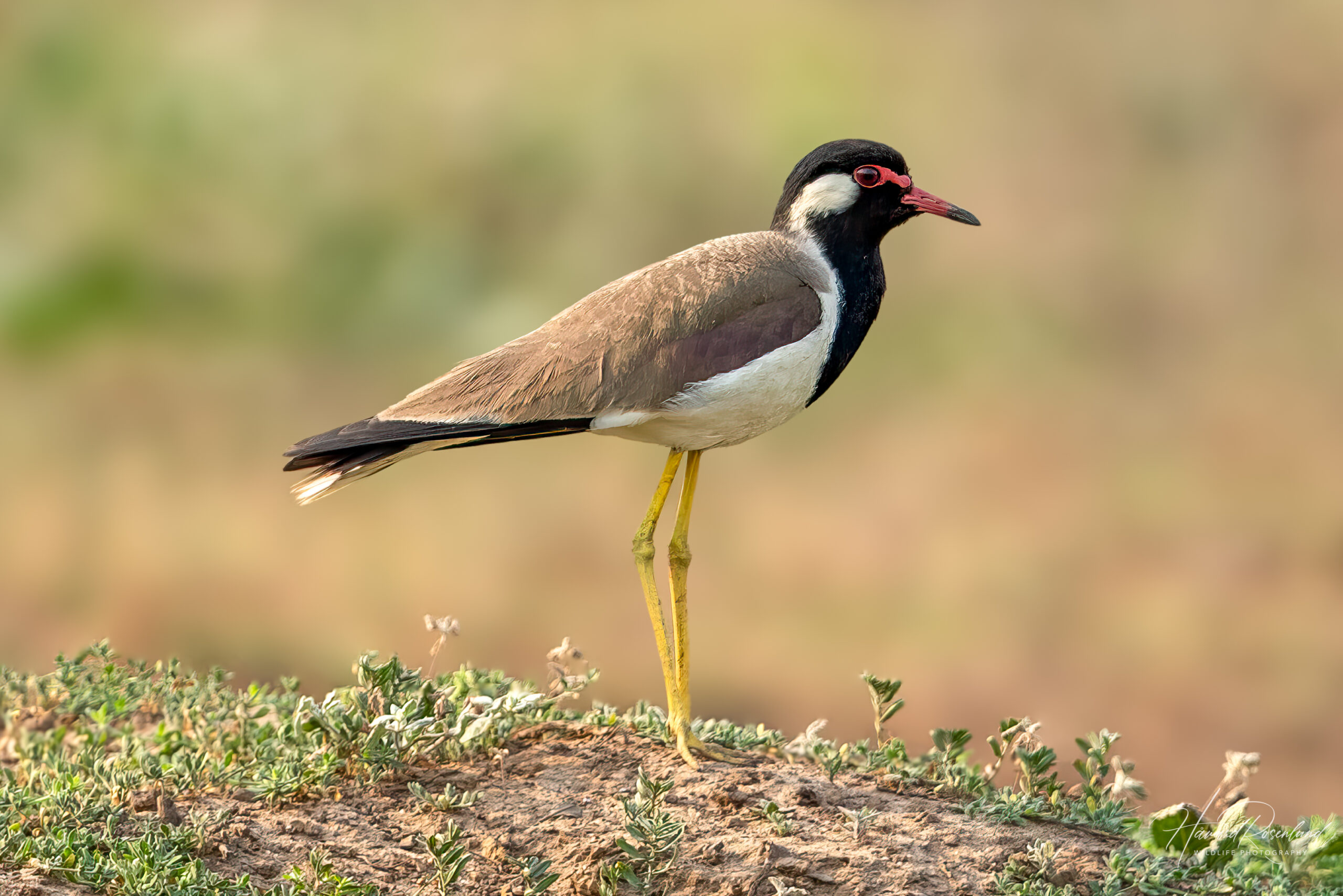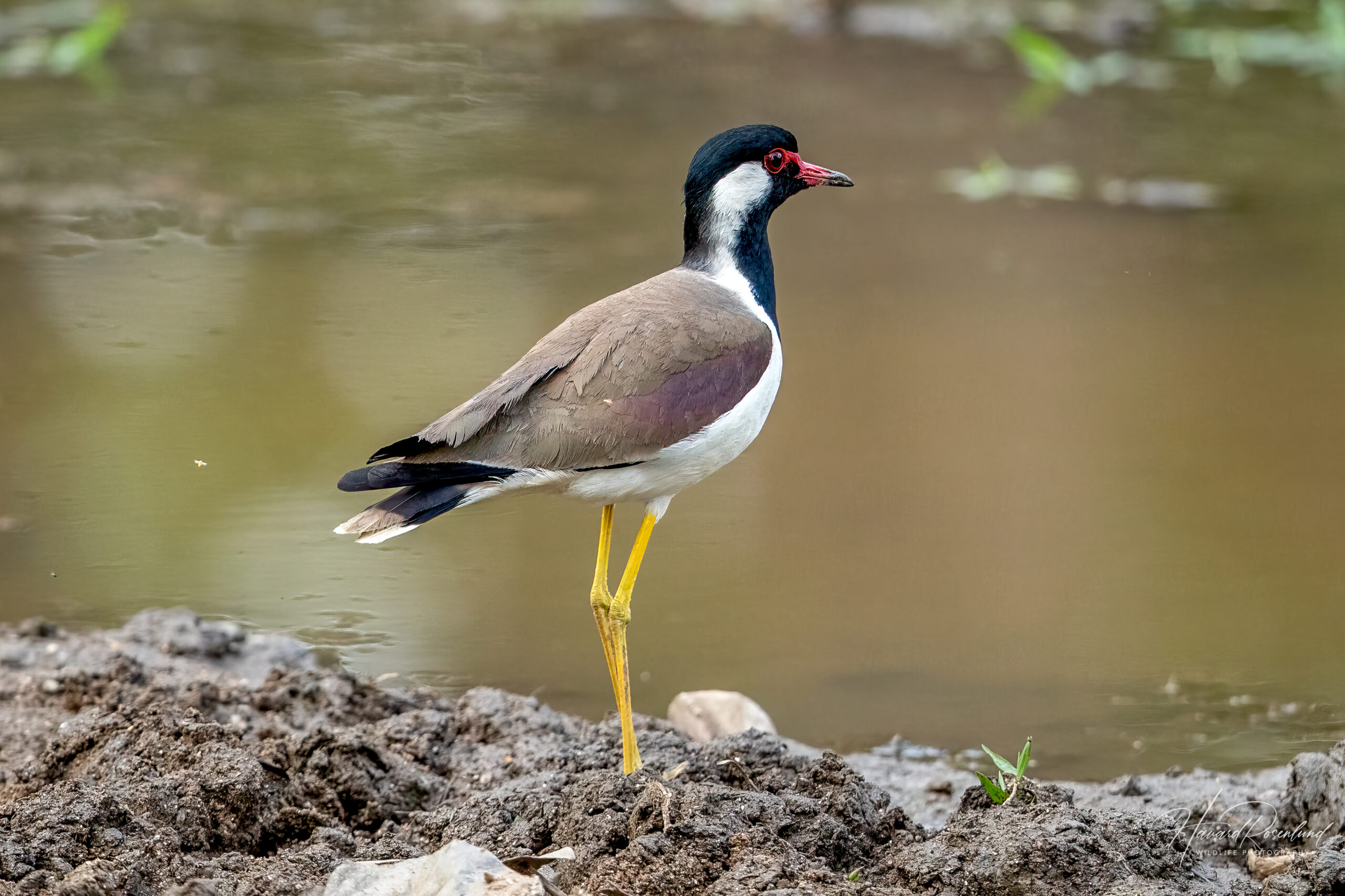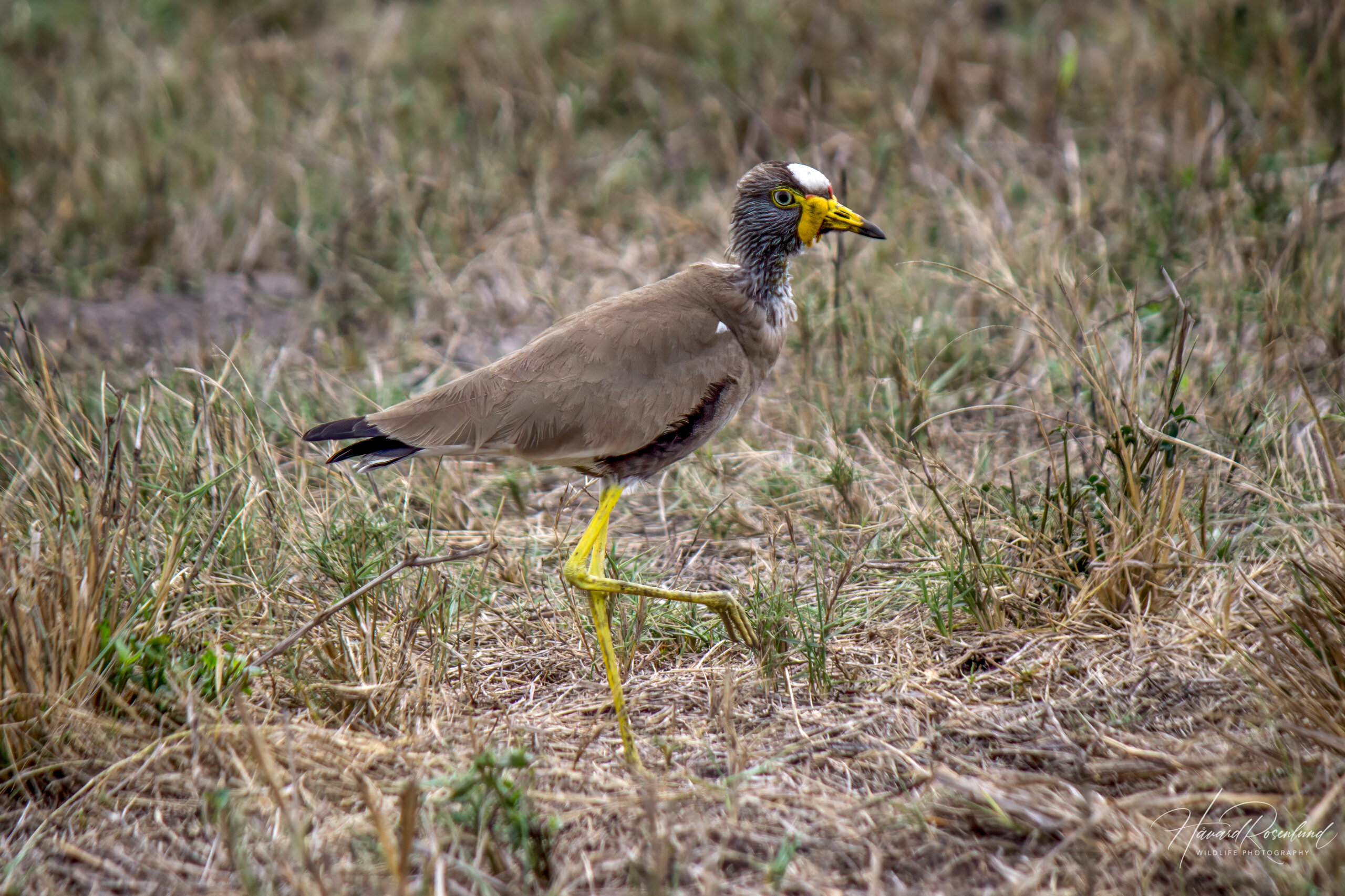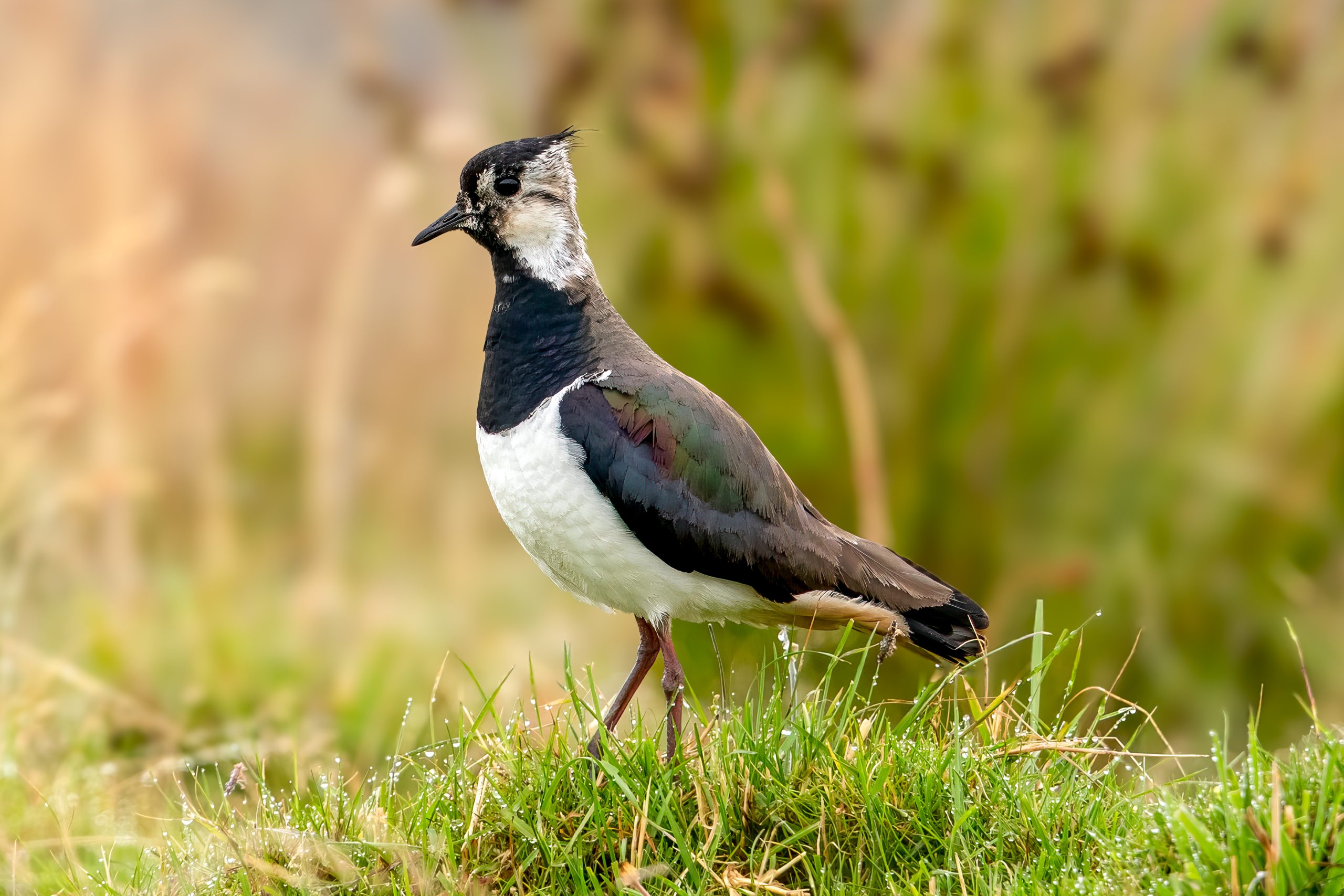Description
The red-wattled lapwing (Vanellus indicus) is a distinctive lapwing commonly found across South Asia, including India, Pakistan, and Nepal, extending into Southeast Asia. It is recognized by its bright red wattle in front of each eye, contrasting with its black and white face, black crown, and throat. Its back and wings are olive-brown, while the underparts are white. The species has long yellow legs and a sharp call. Adults reach a length of 30–35 cm (11.8-13.8 in) with a wingspan of 75–85 cm (29.5-33.5 in). Its prominent red wattles and distinctive head markings makes it easy to distinguish from other species.
Diet & habitat
Red-wattled lapwings are highly adaptable birds, thriving in a variety of habitats, from wetlands and lakeshores to dry fields and cultivated areas. They prefer open, flat terrains where they can easily spot predators. Their diet mainly consists of insects, such as beetles, ants, termites, and other small invertebrates. They forage by walking slowly and picking prey from the ground. Occasionally, they may eat seeds and grains, particularly in agricultural areas. Their feeding strategy involves keen eyesight to detect movement and a quick peck to capture their prey.
Nesting
The breeding season for red-wattled lapwings generally spans from March to August, though this can vary based on geographical location. They are ground-nesters, often choosing bare soil or short grass to lay their eggs. The male initiates several shallow scrapes, from which the female selects one to line with grass, pebbles, and debris.
A typical clutch consists of 3-4 eggs, which are well-camouflaged to blend with the surroundings. Both parents share incubation duties, lasting about 28-30 days. Chicks are precocial, leaving the nest within hours of hatching and are tended by both parents. Fledging occurs approximately 35-40 days after hatching, but the young often stay with the parents until the next breeding season. These birds are highly protective parents, engaging in distraction displays to lure predators away from their nests and chicks.
Status
The red-wattled lapwing is currently classified as least concern on the IUCN Red List, due to its wide distribution and stable population trends. It is a common species in many parts of its range and has adapted well to modified landscapes, such as agricultural fields and urban parks.




